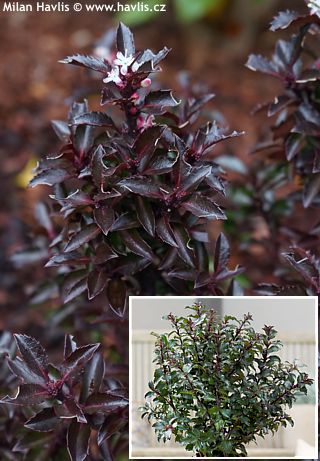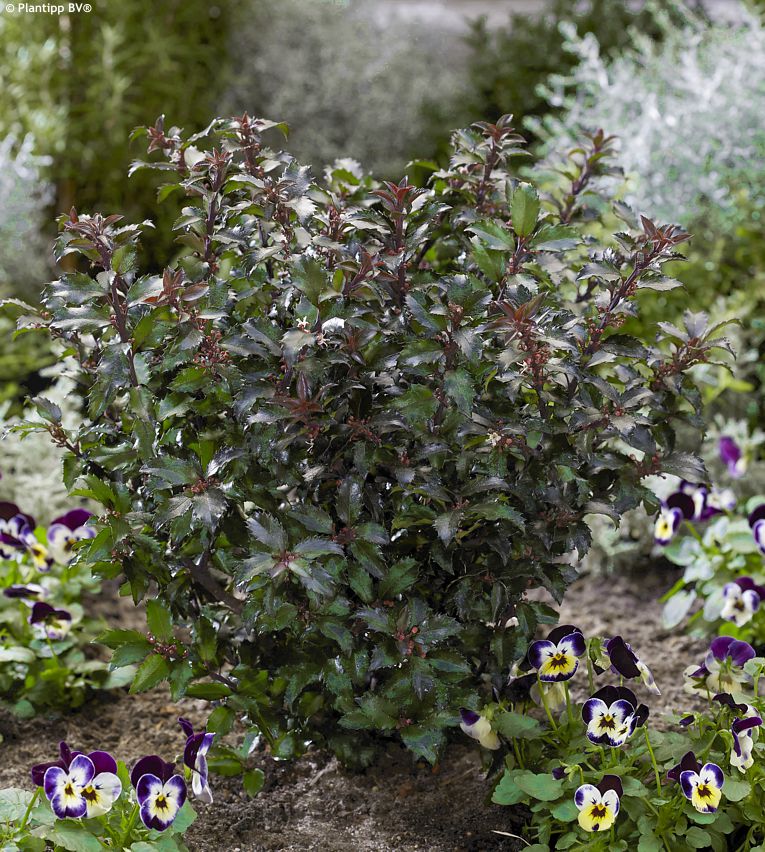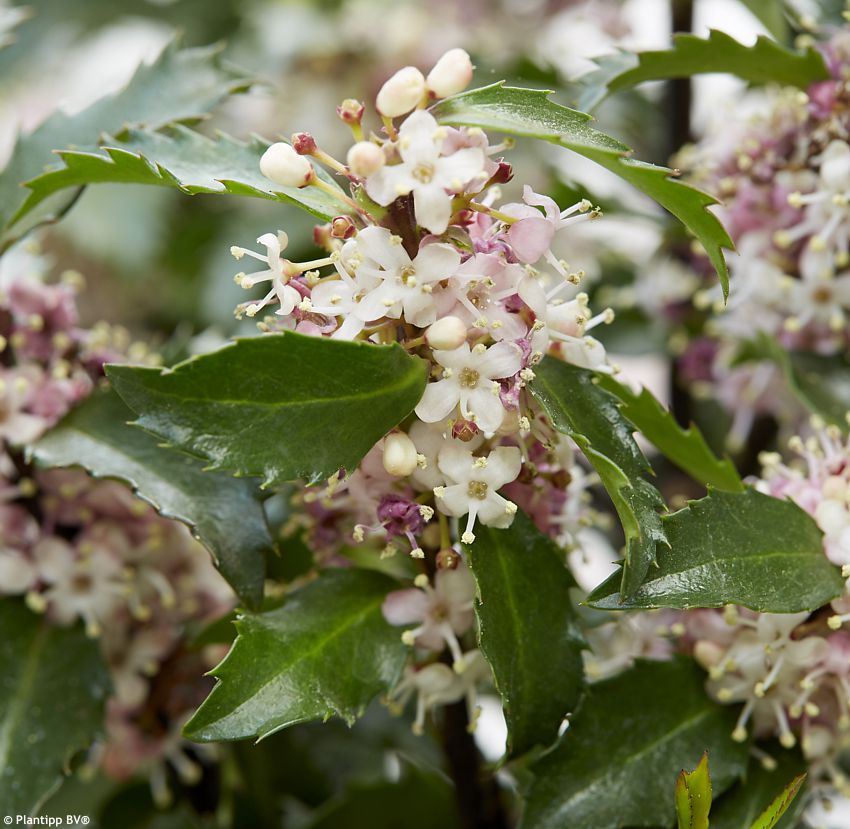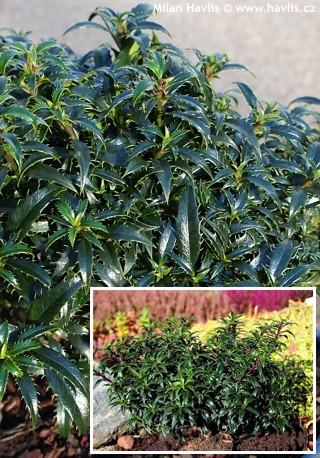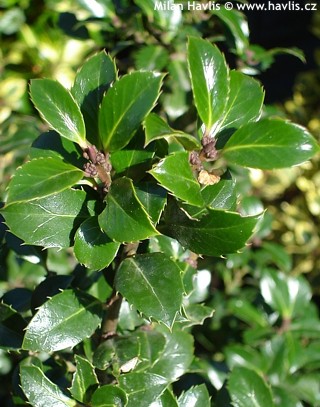Ilex x meserveae 'Annys Dwarf' GENTLE blue holly, Meserve holly - male
size/type
medium-sized shrub,small shrub
usual height
0,6-0,8m
usual width
0,5-0,6m
leaves
evergreen broadleaf
colour of leaves
flowers
less showy but noticeable
colour of flowers
location
full to partial sun
soil type
acidic (peaty)
soil moisture requirements
evenly moist but well-drained
USDA zone (lowest)
5 (down to -29°C)
winter protection
for zone 5+6

for zone 7

categorized
Ilex
GENTLE is a Dutch variety of blue holly discovered in his nursery by Andre Nijnatten from a horticultural town Zundert in 2006. He spotted a much smaller and compact growing holly among other blue hollies and named it Annys dwarf. Later, before it was introduced to market, the name was changed to GENTLE respecting its non-prickly foliage. Granted patents: 49645 (Europe – 2016) and PP30579 (USA – 2019).Description of the plant:
GENTLE is a small blue holly with evergreen leaves. They are ovate, highly glossy, serrated at margins but non-prickly, deep green in the growing season and deep purple blue during the coldest months. As a male variety it bears no fruit but it blooms profusely from young age which makes it an ideal pollinator for many female hollies (not just blue hollies) that produce berries in autumn.It forms compact, well-branched shrubs of a slender vase-shaped habit, reaching some 70-80 cm in height and a bit less in width. It does not require pruning to look good. Still, it can be pruned or trimmed in any way from late winter until midsummer. GENTLE serves a small specimen evergreen shrub in a border with other compact or dwarf shrubs, it complements a flowerbed with compact growing perennials, and it can also be used in an informal, short hedge along pathways. Thanks to its very dark colour in winter it looks exquisite combined with yellow-leaved or white-variegated plants which will stand out like beacons then while GENTLE enhances the colour contrast between its deep purple blue foliage and yellow or white leaves of the surrounding shrubs. And if you are into colour try leucothoe as a companion plant that will add rich ruby red hues all winter long.
Meserveae hollies are called “blue hollies” thanks to the shade of the species leaves that are dark green with bluish tint, especially in cold months. And the name meserveae was chosen for its cultivator, Kathleen Meserve, who, literally on her windowsill, made a cross of ilex rugosa and ilex aquifolium in 1950's in an effort to achieve excellent cold hardiness on a fabulously foliaged evergreen plant. She died in 1999 at the age of 93 but left behind an impressive line of these evergreen, superbly hardy varieties.
Blue holly needs almost no maintenance if you provide them with acid, fertile soil at the beginning, and enough moisture for the first couple of years before its extensive root system is established. Avoid heavy clay sites. Pruning is not needed as it forms a compact shrub on its own, but you can shape it in early spring or in midsummer. Sunny or part shaded location is best, however, it will grow in full shade, too, where it may lose its compact habit. Blue hollies are also renowned for their hardiness: this one has not yet been tested under all conditions but is expected to survive at least -29 °C (USDA zone 5), possibly yet a few degrees lower. It is suitable for large outdoor pots – hollies don’t like congested space.
Last update 01-12-2022.
QUICK PRICE OVERVIEW
CURRENTLY SOLD OUT
WANT TO TRY A SIMILAR PLANT?












